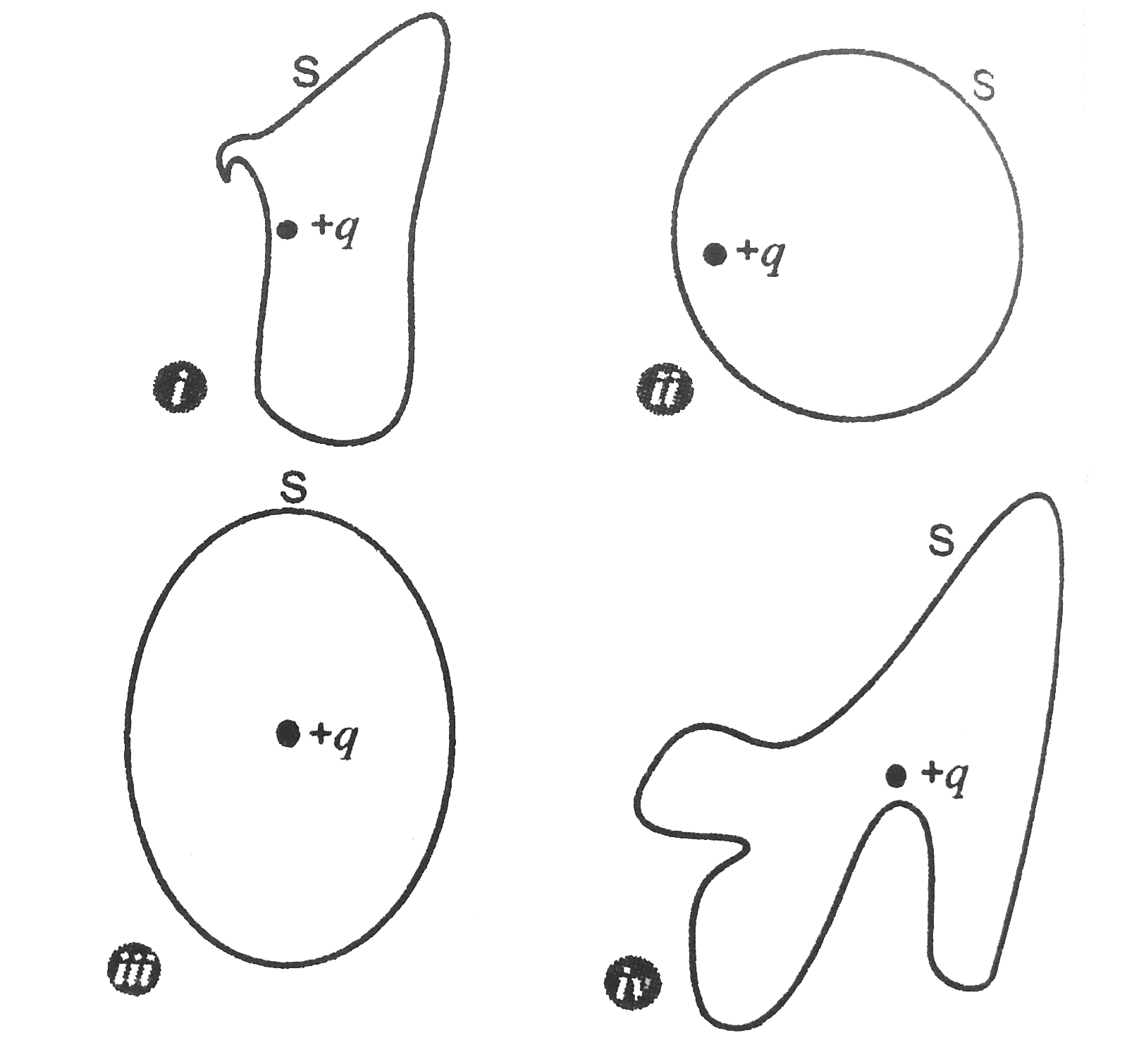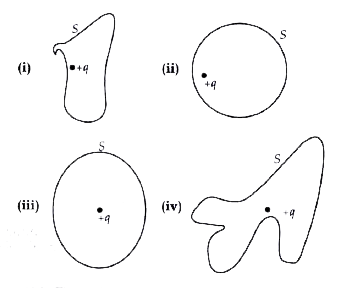If the radius of the Gaussion surface enclosing a charge q is halved, how does the electric flux through the Gaussion surface change?
Reduced to half
Remains same
Becomes double
Increase four times
The correct Answer is:B
Step by step video, text & image solution for If the radius of the Gaussion surface enclosing a charge q is halved, how does the electric flux through the Gaussion surface change? by Physics experts to help you in doubts & scoring excellent marks in Class 12 exams.
Updated on:21/07/2023Similar Questions
Knowledge Check
The electric flux through the surface
 Ain fig, (iv) is the largestBin fig, (iii) is the leastCin fig (ii) is same as a fig (iii) but is smaller than that in Fig (iv).Dis the same for all the figures.
Ain fig, (iv) is the largestBin fig, (iii) is the leastCin fig (ii) is same as a fig (iii) but is smaller than that in Fig (iv).Dis the same for all the figures.The electric flux through the surface
 Ain fig. (iv) is the largestBin fig. (iii) is the leastCin fig. (ii) is same as fig.(iii) but is smaller than fig.(iv)DIs the same for all the figures.
Ain fig. (iv) is the largestBin fig. (iii) is the leastCin fig. (ii) is same as fig.(iii) but is smaller than fig.(iv)DIs the same for all the figures.A charge q is enclosed as shown below the electric flux is
 Amaximum inBmaximum inCmaximum inDequal in all
Amaximum inBmaximum inCmaximum inDequal in all
An arbitrary surface encloses a dipole. What is the electric flux through this surface ?
View SolutionDefine electric flux. Write its SI unit. A charge q is enclosed by a spherical surface of radius R. If the radius is reduced to half, how would the electric flux through the surface change ?
View SolutionA charge q is enclosed as shown, below the electric flux is

View SolutionA cube of side L encloses a charge Q at its centre , electric flux through the cube is
View SolutionA point charge causes an electric flux of −200Nm2/C to pass through spherical Guassian surface of 10 cm radius centered on the charge. If the radius of the Guassian surface is doubled, the total electric flux passing through the surface is
View Solution

